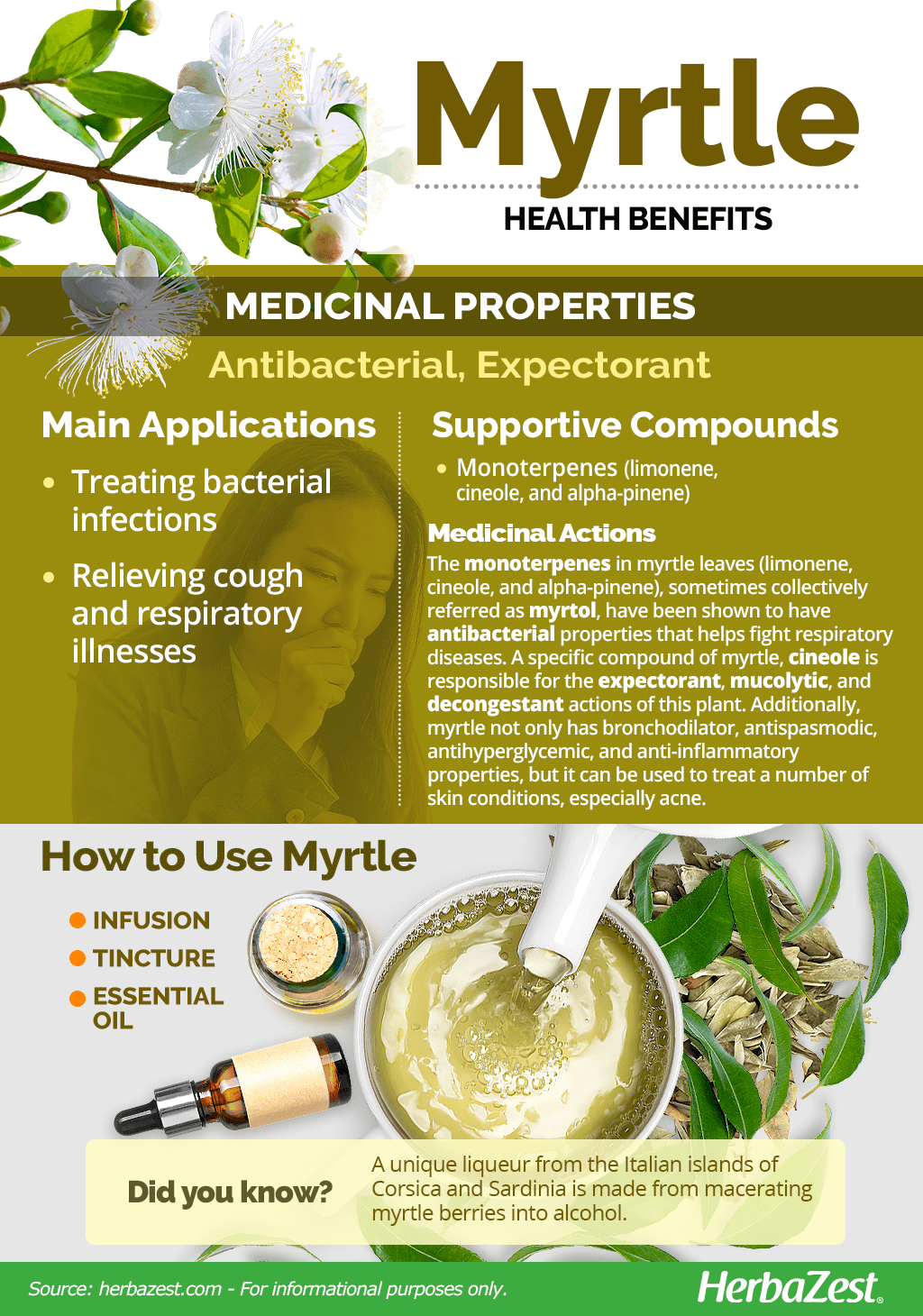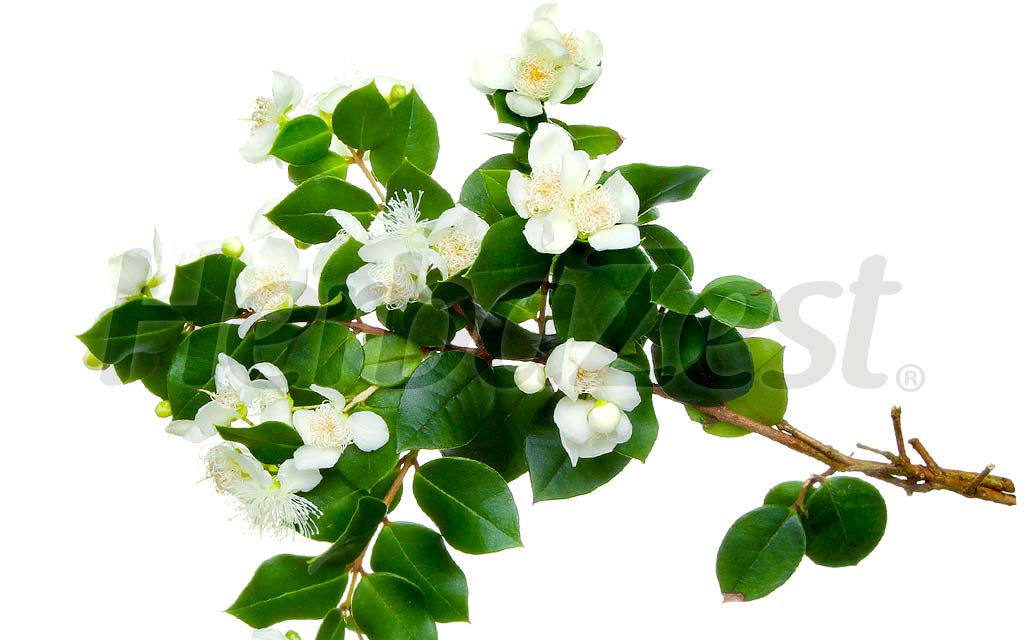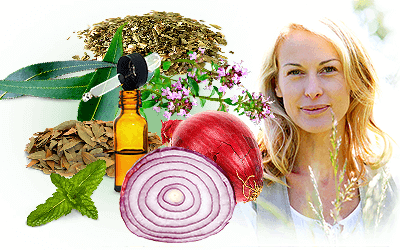Myrtle was first grown in the Mediterranean region, and the native populations of Southern Europe and northern Africa use it both for culinary and medicinal purposes. Modern science has validated some of the traditional uses of myrtle, uncovering its natural compounds and suggesting the mechanisms behind its healing properties.
Myrtle Medicinal Properties
Health Benefits of Myrtle
Though myrtle has been used medicinally for thousands of years, little is known about their mechanisms of action, and further research is needed to corroborate its efficacy. However, myrtle has been traditionally used for:
Treating bacterial infections. Myrtle's antibacterial properties were used for treating infections, especially tuberculosis, before the advent of modern antibiotics.
Relieving cough and respiratory illnesses. Myrtle has traditionally been used to treat respiratory problems due to its ability to open up airways and aid in the expulsion of phlegm.
Along with these primary benefits, secondary benefits include:
Treating acne. Myrtle can be used to treat a number of skin conditions, especially acne.
Myrtle has also been observed to have bronchodilator, antispasmodic, antihyperglycemic, and anti-inflammatory properties, though these have not yet been linked to any specific constituents.
How It Works
The monoterpenes in myrtle leaves have an antibacterial activity against Mycobacterium tuberculosis, and this is thought to be due to the combined action of these nutrients rather than just a single compound.1
Myrtle leaves contain three monoterpenes, limonene, cineole, and alpha-pinene, which are sometimes collectively referred as myrtol. These compounds have antibacterial properties.1
Additionally, cineole in myrtle essential oil is responsible for its expectorant, mucolytic, and decongestant actions.2
Myrtle also contains phenolic compounds - such as gallic acid and anthocyanins - as well as flavonoids, tannins, and fatty acids, which are believed to have antioxidant properties.3
Other herbs with antibacterial and expectorant properties are elecampane, eucalyptus, muña, mullein, and lobelia.
Myrtle Side Effects
Very little research has been done regarding the medicinal value of myrtle. However, overconsumption of myrtle can lead to asthma-like attacks as well as nausea, diarrhea, vomiting, upset stomach, lower blood pressure, and blood circulation disorders.
Cautions
Children, as well as women who are pregnant or breastfeeding, should not take myrtle since it can cause breathing problems or even death when consumed in excess.
Myrtle essential oil is also unsafe at doses exceeding 200 mg for adults and extreme caution should be exercised when consuming it in this form.
- Medicinal action Antibacterial, Expectorant
- Key constituents Monoterpenes (limonene, cineole, and alpha-pinene)
- Ways to use Hot infusions/tisanes, Tincture, Essential oil
- Medicinal rating (1) Very minor uses
- Safety ranking Use with caution
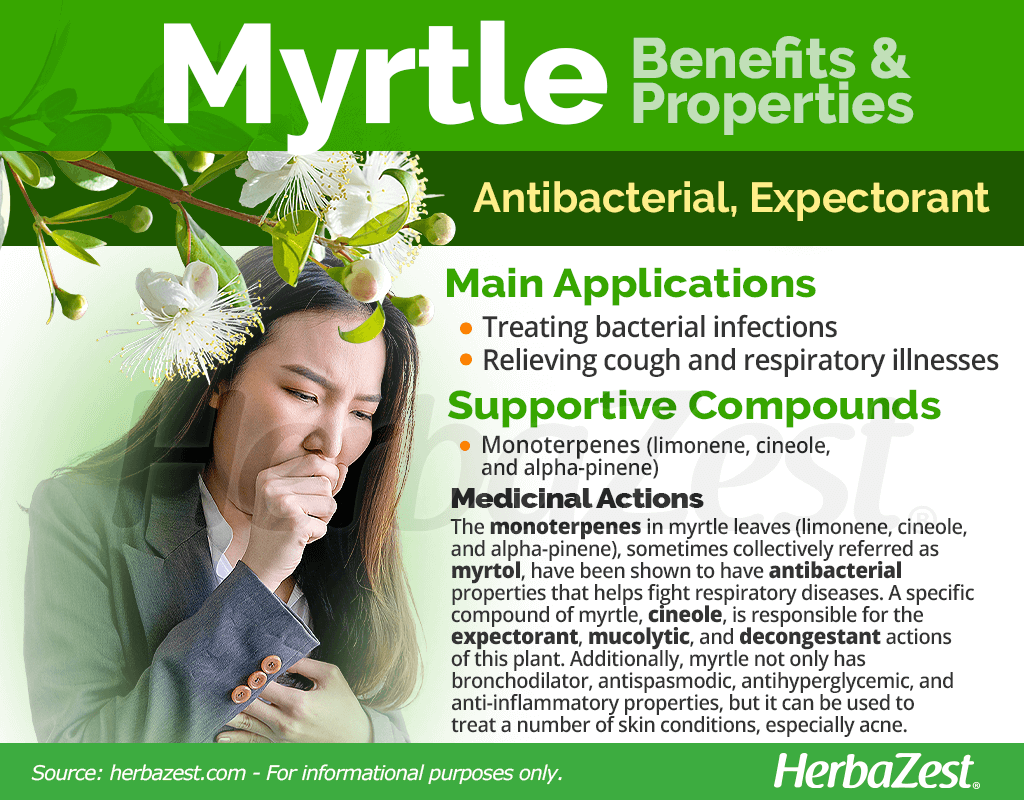
How to Consume Myrtle
While myrtle is occasionally used for culinary purposes, the most effective way of obtaining the health benefits from myrtle is in medicinal forms of consumption, where the properties are more concentrated.
Natural Forms
Infusion. Myrtle-infused hot teas are one of the safest ways to consume this herb. When taken as an infusion, myrtle works as an expectorant, helping relieve congestion by expelling mucus.
Herbal Remedies & Supplements
- Tincture. When prepared as a tincture, myrtle's antibacterial properties make it useful for alleviating bacterial infections, such as bronchitis.
Essential oil. Due to its high risk of side effects, daily use of myrtle essential oil should be moderated. In this way, it can be used to alleviate respiratory ailments.
- Edible parts Fruit, Leaves
- Taste Bitter
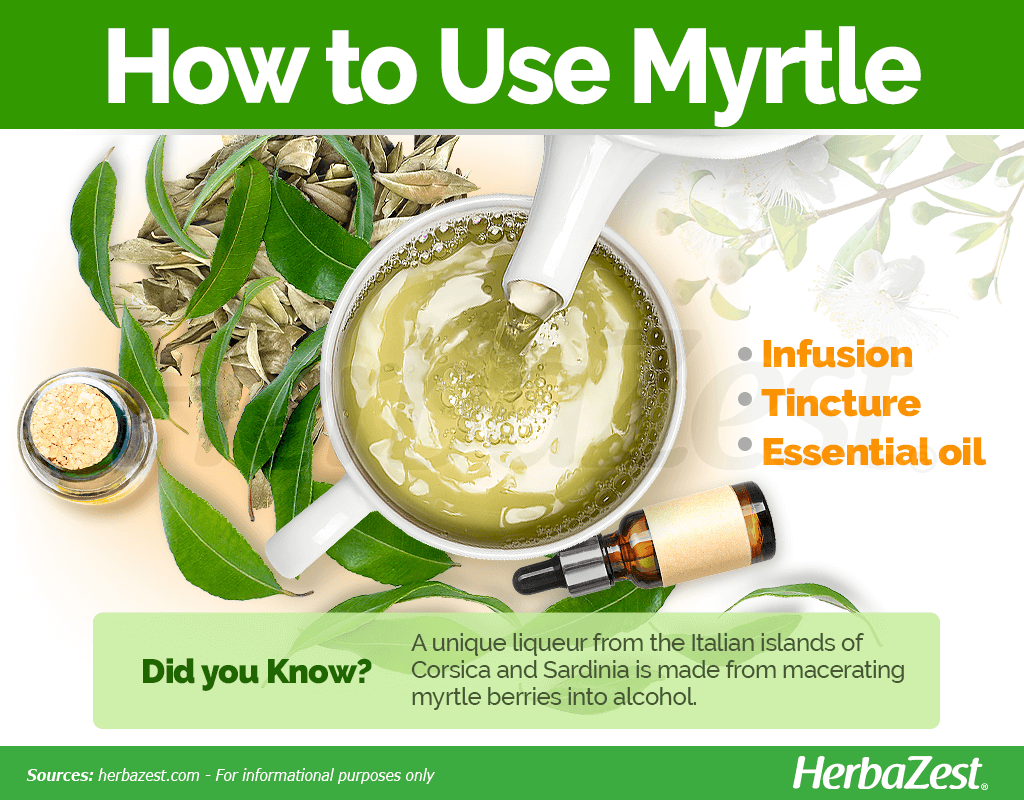
Growing
Well-accustomed to a Mediterranean climate, this evergreen shrub is also a delicate herb. So great care is needed in order to help this plant thrive.
Growing Guidelines
Seeds or young plants must be kept in a sheltered environment for initial growth during late spring.
Myrtle thrives in well-drained soil, which must remain moist at all times. Fertilizer should not be used in winter months.
Young plants should be re-potted every one to two years. Older plants every three to four years, and ideal temperatures are around 60 - 64°F (16 - 18°C), though a few days of frost will not kill the herb.
- Life cycle Perennial
- Harvested parts Leaves, Shoot, Fruit
- Light requirements Full sun
- Soil Peaty
- Soil pH 6.1 – 6.5 (Slightly acidic), 6.6 – 7.3 (Neutral)
- Growing habitat Temperate climates, Mediterranean regions
- USDA Plant Hardiness Zones 7a, 7b, 8a, 8b, 9a, 9b
- Potential diseases Mildew
Additional Information
Plant Biology
Technically a shrub, this plant is sometimes classified as a small tree, because it can reach heights of up to 16 ft (5 m). Its star-like flowers are usually white with numerous stamens, and its fruit is a round, blue-black berry. The essential oils present in the leaves give off its signature aroma.
Classification
Myrtle, or Myrtus communis, is a member of the Myrtaceae family, which comprises approximately 155 genera and 3,000 species of mostly aromatic woody trees and shrubs, such as allspice (Pimenta dioica), camu camu (Myrciaria dubia), guava (Psidium guajava), and clove (Syzygium aromaticum).
Varieties and Subspecies of Myrtle
The Myrtus genus encompasses only two species: the widespread Myrtus communis, or true myrtle, and the lesser-known Myrtus nivellei, or Saharan myrtle. The latter is grown only in the very restricted woodlands of the Tassili n'Ajjer Mountains, near the center of the Sahara Desert, and it is listed as an endangered species. The differences between true myrtle and its Saharan counterpart are so slight; however, that its distinction as a separate species is under debate. As of present, M. communis is divided into two subspecies, communis and tarentina.
Historical Information
Because of its elegance and pleasant aroma, myrtle trees were common in ancient Greek and Roman gardens. They were even presented to Roman elites as gifts once they were settled into a new home, if that settlement was near the Mediterranean Sea, where the plant best thrives.
Thanks to its pleasant fragrance, myrtle has been a staple of Mediterranean gardens for just as long. Jewish liturgy also mentions the plant as sacred, and it is employed in the autumn festival of Sukkot.
Economic Data
Due to its multipurpose nature, myrtle is cultivated globally, mainly as an ornamental plant and for the timber industry due to the density of its wood. Large-scale production is most prevalent on its native European shores, with Germany alone generating an estimated USD 18 million in 2012 for culinary and medicinal use. Herbal traditions throughout China also put the plant in high demand, though in other parts of the world, myrtle growth is more modest, but it still sells well as a garden shrub or for alternative therapeutic remedies.
Popular Beliefs
In ancient Greece, myrtle was considered as a symbol of love and immortality. This belief was also passed on to Rome, where the herb was used in religious rituals. The tradition of having myrtle in a bride's bouquet comes from this source and is carried on throughout Europe even now.
Myrtle is one of many herbs mentioned in the New Testament of the Christian bible, in the book of Isaiah, and was considered a sacred plant. Myrtle twigs, together with palm branches and twigs of willows, are still used in the ritual of the Feast of Tabernacles.
Other Uses
Gardening. As a powerful aromatic, myrtle has graced the gardens of many around the world for aesthetic and ornamental pleasure. It has even garnered the esteem of Britain's Royal Horticultural Society, winning their Award of Garden Merit.
Drinking. A regional liqueur, made exclusively on the Italian islands of Corsica and Sardinia, is made from macerating myrtle berries into alcohol.
- Other uses Alcohol, Perfume
Sources
- Genetic Resources, Chromosome Engineering, and Crop Improvement, pp. 178, 923-931
- North Carolina State University, Extension Gardener, Myrtus communis
- Smithsonian National Museum of Natural History, Libraries and Archives, Myrtle: The Provenance and Meaning of a Plant
- Medicinal Plants of the World, p. 212
- Germplasm Resources Information, Taxon: Myrtus communis L.
Footnotes
- Interdisciplinary Perspectives on Infectious Diseases. (2010). Evaluation of the Antimicrobial Properties of the Essential Oil of Myrtus communis L. against Clinical Strains of Mycobacterium spp. Retrieved December 14, 2023, from: https://pubmed.ncbi.nlm.nih.gov/20706606/
- Journal of Physiology and Pharmacology, Bronchodilator. (2013). Vasodilator and spasmolytic activities of methanolic extract of Myrtus communis L. Retrieved December 14, 2023, from: https://pubmed.ncbi.nlm.nih.gov/24101394/
- Pharmacognosy Research. (2010). Secondary metabolites and bioactivities of Myrtus communis. Retrieved December 14, 2023, from: https://www.ncbi.nlm.nih.gov/pmc/articles/PMC3111689/
